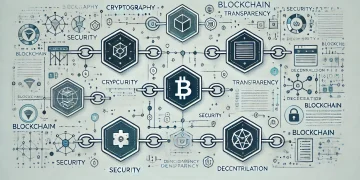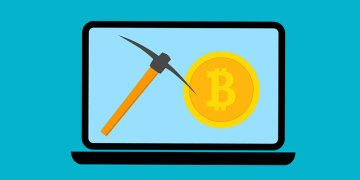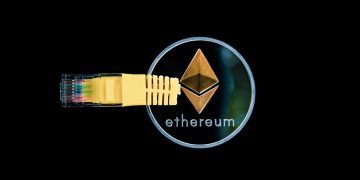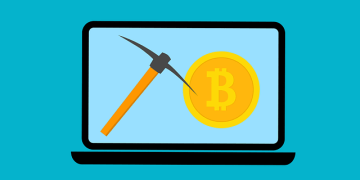The global banking industry is undergoing a profound transformation, and at the heart of this change lies blockchain technology. Initially introduced as the backbone of Bitcoin, blockchain has evolved far beyond its origins. Today, it offers solutions that can streamline financial operations, reduce costs, enhance security, and increase transparency. As banks face increasing pressure to innovate and meet the demands of a digital economy, blockchain emerges as a powerful tool to reshape the way financial services are delivered.
From cross-border payments to smart contracts and decentralized finance (DeFi), blockchain has the potential to revolutionize every corner of banking. In this article, we will explore blockchain’s impact on the financial sector, the benefits and challenges it brings, and the long-term prospects for a future shaped by decentralized finance.
Blockchain 101: The Basics
Before diving into its impact on banking, let’s take a moment to understand what blockchain technology is. At its core, blockchain is a type of distributed ledger technology (DLT). It stores records of transactions across multiple computers in a way that ensures the data is secure, transparent, and tamper-proof. Each block of information is linked to the previous one, creating an unchangeable chain.
What makes blockchain unique is its ability to eliminate the need for central authorities or intermediaries. Instead of relying on a bank or payment processor to verify a transaction, blockchain networks use consensus algorithms to ensure accuracy and trust. This shift towards peer-to-peer systems is one of the most significant promises of blockchain, offering banks the opportunity to reimagine how they operate.
The Limitations of Traditional Banking
Traditional banking relies on centralized infrastructures, meaning all transactions are funneled through intermediaries such as banks, clearinghouses, or payment networks. While these intermediaries provide security and trust, they also introduce significant inefficiencies. For example:
- Slow transaction times: Cross-border payments can take days to settle.
- High operational costs: Banks charge substantial fees to maintain infrastructure and manage transactions.
- Limited transparency: Customers often have limited visibility into transaction processes.
- Security risks: Centralized systems are vulnerable to cyberattacks and fraud.
Blockchain offers an alternative, decentralized model that can eliminate many of these pain points. It can provide faster payments, lower costs, and greater security, bringing substantial improvements to the financial sector.
1. Faster and Cheaper Cross-Border Payments
One of the most exciting applications of blockchain in banking is in cross-border payments. Today, sending money across countries involves a series of intermediaries, such as correspondent banks, which makes the process both expensive and time-consuming. According to a World Bank report, international money transfers can take up to five days to settle and cost an average of 7% in fees.
Blockchain networks, like Ripple, have shown that cross-border transactions can be completed in seconds and at a fraction of the cost. By using cryptographic tokens or stablecoins, blockchain allows money to move seamlessly across borders without requiring banks to go through multiple intermediaries. This innovation is especially beneficial for remittances—a vital lifeline for millions of people in developing countries.
2. Smart Contracts: Automating Financial Processes
Blockchain also enables the use of smart contracts—self-executing contracts with terms written directly into code. Smart contracts automatically enforce agreements when predetermined conditions are met, eliminating the need for middlemen.
In banking, smart contracts can simplify and automate processes such as:
- Loan disbursement: A smart contract can automatically release loan amounts once the borrower meets eligibility criteria.
- Insurance payouts: Claims can be automatically settled based on verified events, such as a flight delay or a natural disaster.
- Trade finance: Payments can be triggered when goods arrive at their destination, streamlining the entire supply chain.
These automated processes reduce human error, operational costs, and the risk of disputes, making financial operations more efficient.
3. Enhanced Security through Decentralization
Security is a top priority for banks, given the growing number of cyberattacks and data breaches. Blockchain provides a more secure infrastructure by decentralizing data storage and using encryption techniques to protect information.
In a blockchain-based system:
- Decentralization ensures there is no single point of failure, reducing the risk of large-scale cyberattacks.
- Immutable records mean that once a transaction is recorded, it cannot be altered or deleted, preventing fraud.
- Digital identities secured by blockchain offer a safer alternative to traditional identity management systems, reducing the risk of identity theft.
By adopting blockchain, banks can strengthen their cybersecurity frameworks while lowering the costs associated with fraud detection and prevention.
4. Digital Identity Management and KYC Compliance
In today’s banking environment, customer onboarding involves extensive KYC (Know Your Customer) and AML (Anti-Money Laundering) procedures. These processes are costly and often repeated across multiple financial institutions.
Blockchain can streamline identity verification through digital identities. Once a customer’s identity is verified on a blockchain, other banks can access the same record without duplicating efforts. This reduces onboarding time, enhances customer experience, and ensures compliance with regulatory standards. Self-sovereign identities, where individuals control their data, are also gaining traction, offering a more secure and privacy-friendly approach.
5. Decentralized Finance (DeFi): The Rise of a New Financial Ecosystem
The rise of Decentralized Finance (DeFi) is another indication of how blockchain is transforming banking. DeFi platforms offer financial services such as lending, borrowing, trading, and saving without the need for traditional banks. All transactions are managed by smart contracts, allowing users to interact directly with the platform.
Key benefits of DeFi include:
- Accessibility: Anyone with an internet connection can participate.
- Lower fees: DeFi platforms operate without middlemen, reducing costs.
- Passive income opportunities: Users can earn interest or rewards by providing liquidity to the platform.
While DeFi is still in its early stages, its rapid growth demonstrates the demand for alternative financial solutions that are open, transparent, and inclusive.
6. Central Bank Digital Currencies (CBDCs): A Blockchain-Driven Future
Many central banks around the world are experimenting with Central Bank Digital Currencies (CBDCs). While not all CBDCs will use blockchain, many pilot projects are exploring distributed ledger technology (DLT) to modernize payment systems and promote financial inclusion.
For example:
- China has launched the Digital Yuan to enhance domestic payments.
- The European Central Bank is working on a Digital Euro to complement its existing currency.
- The U.S. Federal Reserve is researching the feasibility of a Digital Dollar.
CBDCs could redefine the role of banks, offering instant settlement and reducing dependence on private payment networks.
7. Challenges and Risks of Blockchain Adoption in Banking
Despite its potential, blockchain faces several challenges that must be addressed for widespread adoption:
- Regulatory uncertainty: Governments are still formulating rules around blockchain-based financial services.
- Scalability issues: Some blockchain networks struggle to handle high transaction volumes efficiently.
- Integration hurdles: Banks need to integrate blockchain with legacy systems without disrupting existing services.
- User education: Both customers and employees need to understand how blockchain systems work to use them effectively.
Overcoming these challenges will require collaboration between banks, regulators, and technology providers.
8. Conclusion: A New Era of Banking
Blockchain technology is reshaping the financial sector, offering faster payments, improved security, and automated processes. As banks embrace this technology, they stand to gain significant benefits in terms of cost savings, efficiency, and customer satisfaction. At the same time, new financial models like DeFi and CBDCs are emerging, challenging the traditional role of banks.
The future of finance is decentralized, transparent, and inclusive—and blockchain is at the heart of this transformation. Banks that successfully integrate blockchain into their operations will not only survive but thrive in this new financial landscape.











































